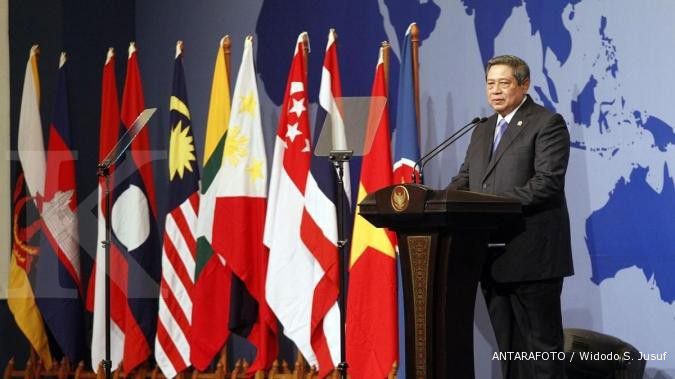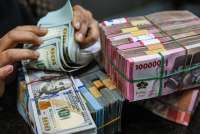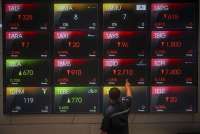JAKARTA. The biggest gathering of ASEAN, Latin American and Caribbean decision makers kicked off in Jakarta on Monday, with participants pondering the big task of improving connectivity and business confidence between emerging regions.
Despite the sheer geographical distance and limited past interaction between the regions, the participants agreed that the benefits of deepening trade and investment relations would be undeniable at a time when the global economy is shrouded in prolonged crisis in the US and the European Union.
“We cannot ignore the fact that despite encouraging developments in Greece and Spain, the crisis in the eurozone is far from over. The OECD [Organisation for Economic Cooperation and Development] has predicted that the eurozone will contract by 2 percent in 2012,” said President Susilo Bambang Yudhoyono in his keynote speech on the first day of the third ASEAN-Latin Business Forum.
Yudhoyono, who recently returned from trips to Mexico, Brazil and Ecuador, credited participants who had traveled on long flights to Jakarta, saying that their “fatigue and jet lag” were a testament to the spirit of cooperation and mutuality.
The president said that economic dynamism and robust growth in Latin America (LatAm) and Caribbean countries as well as Southeast Asia represented enough incentive to improve trade and investment relations.
According to the UN Economic Commission for Latin America and the Caribbean (UNECLAC), Latin America’s collective GDP has reached US$6.87 trillion and is expected to grow by 4.1 percent this year. The combined value of ASEAN currently stands at about $3.36 trillion and is projected to grow at 7.2 percent.
“These two dynamic regions have so much potential for collaboration that we have yet to tap in earnest,” Yudhoyono said, while adding that despite the size of economies and populations, trade between the two regions only made up 2.3 percent of the total value of trade with all global partners.
ASEAN is home to 608 million people, almost equal to the combined population of Latin America and the Caribbean, which is about 578 million.
The President said that improving connectivity was crucial to realizing the market potential of the regions. He also added that other issues pertinent to trade barriers must also be addressed.
HSBC chief economist for India and ASEAN Leif Lybecker Eskesen agreed that connectivity had to be improved and the governments in both regions must also be able to create comfortable climates to boost trade and investment.
“There are some challenges that must be solved like trade barriers, import tariffs and other restrictions, which don’t allow trade and investment to flow freely,” he said.
Citing a HSBC forecast, Eskesen said that by 2050, Brazil and Mexico would be in the top 10 largest economies in the world, while Indonesia, the Philippines, Malaysia and Thailand would be in the top 25, followed by Peru and Venezuela in the top 35.
Indonesian Trade Minister Gita Wirjawan said ASEAN, Latin America and Caribbean economies should take plenty of “small big steps” to realize economic potential between the regions. The regions, he said, each had “something sexy” to offer and added that it was left to stakeholders to educate their counterparts.
“We have to do this continuously and diligently. Make no mistake, we are competing with other zones such as the Middle East, India and Pakistan. They are amazing in terms of trade,” he said.
The ASEAN-Latin Business Forum will extend until Tuesday, in which International Monetary Fund (IMF) managing director Christine Lagarde is scheduled to address trade ministers and other participants on the state of affairs in the global economic crisis. (Andi Haswidi and Rangga D. Fadillah/ The Jakarta Post)
Cek Berita dan Artikel yang lain di Google News










